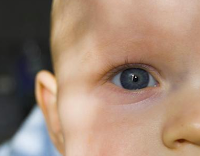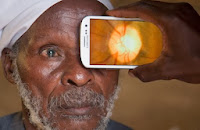Diabetes is the most common cause of blindness in adults under the age of 70, and diabetic retinopathy affects roughly 25% of diabetics. Diabetic retinopathy is caused by the deterioration of blood vessels that nourish the retina. When this happens, the vessels weaken and leak fluid that would have otherwise provided healthy nourishment for the retina.
The early stages of the disease are quite subtle and most patients don’t notice a change in vision until a much later stage when they experience blurred vision or floaters in the eye. The longer the individual has had diabetes and the level of the individual’s diabetic control are both factors that can lead to a greater chance of developing diabetic retinopathy.
If the disease is caught and monitored in an early stage, more of the sight-damaging effects can be slowed or stopped completely.
Ophthalmologist Clayton Falknor, M.D. explained, “If a person with diabetes waits until they notice vision problems to have their eyes examined, they run a much greater chance of having more severe retinal disease which may require laser treatments, injectable medications, and possibly even surgery. Their primary care physician also needs to know the extent of retinopathy present to guide the aggressiveness of blood sugar management on a day-to-day basis.”
A comprehensive annual exam is one of the best ways to keep diabetic retinopathy in check. Make an appointment with one of our skilled ophthalmologists at the Eye Clinic of Austin to ensure early diagnosis and treatment.
Source: http://www.emaxhealth.com/1020/national-diabetes-month-good-time-focus-eye-health
Source: http://www.emaxhealth.com/1020/national-diabetes-month-good-time-focus-eye-health





